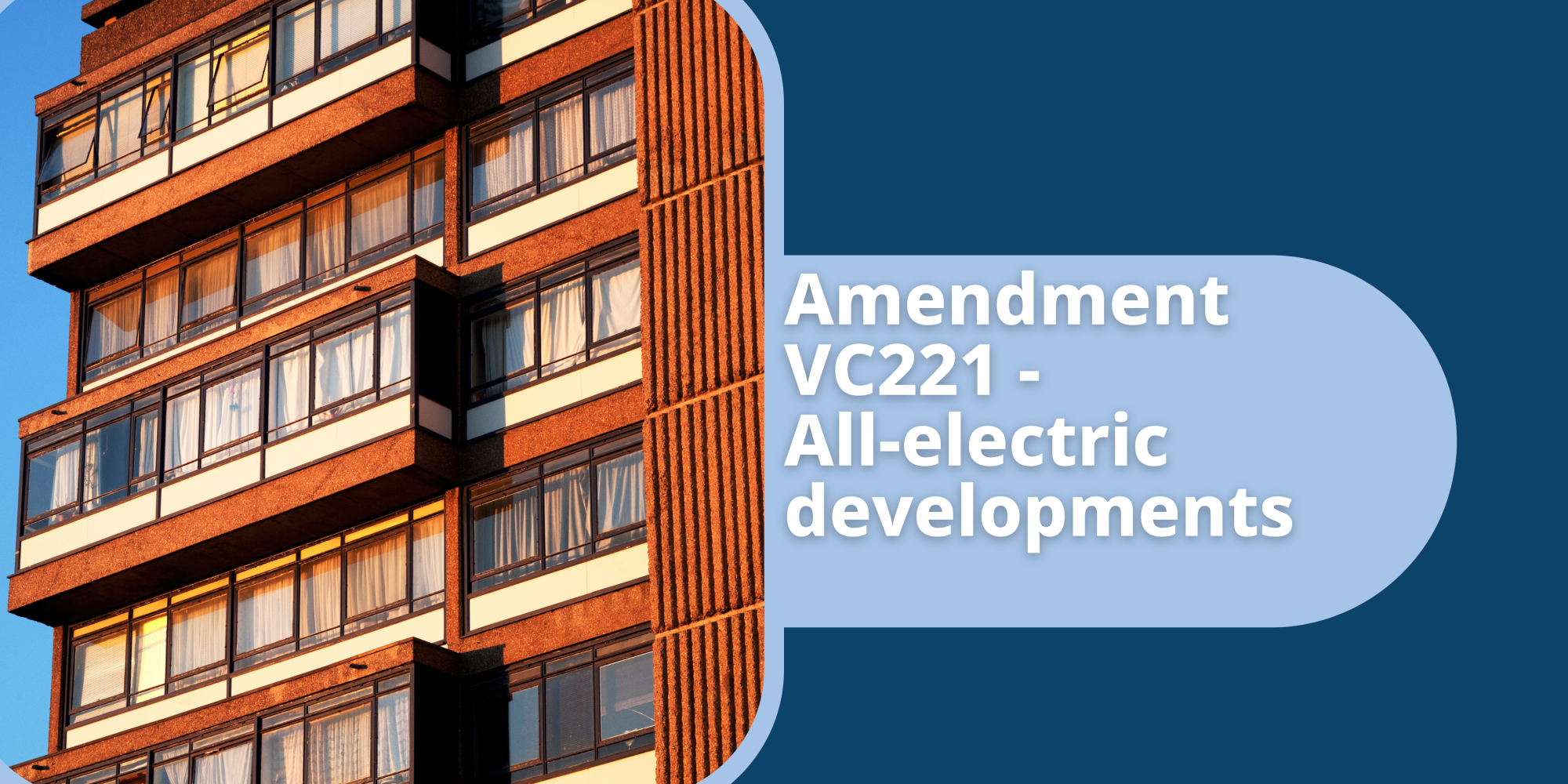On August 4th 2022, the Minister for Planning formally gazetted Amendment VC221 into all eighty three Planning Schemes across Victoria. The amendment facilitates all-electric developments to support the implementation of Victoria’s Climate Change Strategy 2021 (Strategy) and Gas Substitution Roadmap 2022 (Roadmap).
The amendment changes the Victorian Planning Provisions (VPP) and all Planning Schemes by amending Clauses that require development to be connected to reticulated gas and amends the subsequent referral requirements.
All information and contributory documentation regarding the amendment can be found here.
Purpose
Policy contained within the Strategy and Roadmap seeks to reduce emissions and transition to cleaner energies with the ultimate aim to decarbonise Victoria’s economy.
In 2022 and beyond, developers and homeowners will, over time, inevitably switch to all-electric energy to implement more efficient systems and reduce their energy costs. Existing planning provisions that require or encourage reticulated gas to be connected where it is available, as well as the current requirements of determining referral authorities, invariably limits the opportunities for developers and homeowners to opt for all-electric development.
The amendment gives effect to this by removing barriers to all-electric development, as it changes the relevant planning provisions and referral requirements to facilitate the transition toward electrification and supports the achievement of emission reduction targets.
How is this achieved?
As aforementioned, VC221 changes the VPP and all Victorian Planning Schemes by amending Clauses that require developments to be connected to reticulated gas and amends the referral requirements of determining authorities.
The following changes to the relevant Clauses of the Planning Schemes have been made:
- Clause 52.20-6.1 and 52.20-6.3 (Victoria’s Big Housing Build / Housing by or on behalf of the Director of Housing): removes the requirement that development should be connected to reticulated gas, if available and to ensure new connections to a reticulated gas service are optional.
- Clause 55.02 (Rescode Standard B4 – Infrastructure Objectives): amends the Standard by removing the requirement that development should be connected to reticulated gas, if available and to ensure that new connections to a reticulated gas service are optional.
- Clause 56.09-2 (Residential Subdivision Standard C28 – Electricity, Telecommunications, and Gas Objectives): amends the Standard so that, where it is proposed to be connected, a reticulated gas supply system must be designed in accordance with the requirements of the relevant gas supply agency.
- Clause 58.02-4 (Apartment Buildings Standard D4 – Infrastructure Objectives): amends the Standard by removing the requirement that development should be connected to reticulated gas, if available, and to ensure new connections to a reticulated gas service are optional.
- Clause 66.01 (Subdivision Referrals): amends the referral requirement to specify that only subdivision applications that propose to connect a lot to reticulated gas be referred to the gas supply authority as a determining authority.
Does this benefit me?
The amendment will result in a number of positive environmental, social, and economic benefits as it will facilitate the transition to more sustainable energy systems in new development.
For consumers, the amendment will generate important economic benefits by removing the effective mandate to connect developments to reticulated gas. This provides consumers with a greater choice about how they choose to source their energy needs.
The switch from gas to electricity has the capacity to reduce household energy bills by an average of $840 per year, and this is an important cost-save given the increasing use of heating and cooling appliances.
The amendment will generate positive environmental benefits by removing the gas connection mandate for new subdivision developments. Consumers will be provided with the choice to live in all-electric developments and this assists in unlocking the capacity for energy efficient and renewable technologies to achieve the State’s emissions reduction targets.
